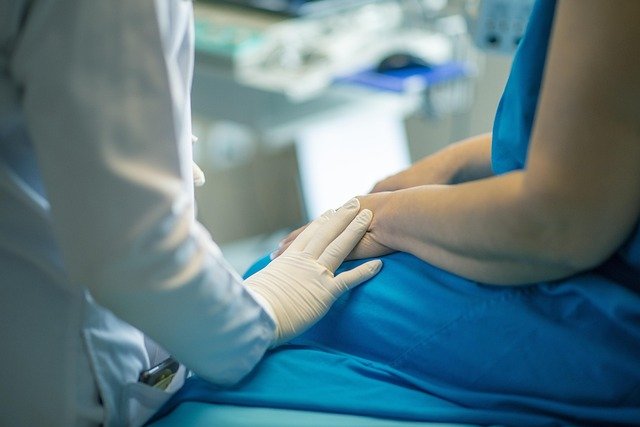Understanding Tummy Tuck Surgery: Procedures and Options
Tummy tuck surgery, medically known as abdominoplasty, has become an increasingly popular cosmetic procedure for individuals seeking to address excess skin and weakened abdominal muscles. This surgical intervention offers a solution for those who struggle with loose skin following significant weight loss, pregnancy, or natural aging processes that diet and exercise alone cannot remedy.

Abdominoplasty represents a significant surgical procedure that reshapes and firms the abdominal area by removing excess skin and fat while tightening the underlying muscle structure. The surgery addresses various concerns including stretched skin, separated abdominal muscles, and stubborn fat deposits that resist traditional weight loss methods.
The procedure typically involves making an incision along the lower abdomen, allowing surgeons to access and repair the abdominal wall muscles while removing excess tissue. Recovery generally requires several weeks of careful monitoring and gradual return to normal activities.
Understanding Tummy Tuck Trials and Research
Clinical trials for abdominoplasty procedures focus on improving surgical techniques, reducing recovery times, and minimising complications. These research studies examine various aspects including different suturing methods, pain management protocols, and innovative approaches to tissue removal and muscle repair.
Research institutions and plastic surgery centres often conduct studies comparing traditional techniques with newer methods such as mini tummy tucks, endoscopic procedures, or combination treatments. These trials help establish evidence-based best practices and contribute to the ongoing refinement of surgical protocols.
Participation in clinical trials requires meeting specific criteria and understanding both potential benefits and risks associated with experimental procedures or techniques.
The Benefits of Participation in Clinical Studies
Patients who participate in abdominoplasty research studies may gain access to cutting-edge techniques before they become widely available. Clinical trial participants often receive enhanced monitoring and follow-up care from specialised medical teams dedicated to research outcomes.
Benefits can include reduced or waived surgical fees, comprehensive pre and post-operative care, and contribution to medical advancement that benefits future patients. However, participation also involves additional time commitments for data collection, follow-up appointments, and detailed documentation of recovery progress.
Research participants must carefully consider the experimental nature of trial procedures and discuss potential risks with qualified medical professionals before making decisions about participation.
Access to Cutting-Edge Procedures and Techniques
Modern abdominoplasty incorporates advanced techniques such as progressive tension sutures, which can reduce recovery time and improve cosmetic outcomes. Some surgeons now offer combination procedures that address multiple concerns simultaneously, such as liposuction with muscle repair.
Innovative approaches include endoscopic techniques for muscle repair, which use smaller incisions and potentially faster healing times. Surgeons may also employ advanced imaging technology for surgical planning and improved precision during procedures.
Access to these advanced techniques often depends on surgeon expertise, facility capabilities, and patient suitability based on individual anatomy and health factors.
| Procedure Type | Provider Examples | Cost Estimation |
|---|---|---|
| Full Abdominoplasty | Private hospitals, specialist clinics | £6,000 - £12,000 |
| Mini Tummy Tuck | Cosmetic surgery centres | £4,000 - £8,000 |
| Extended Abdominoplasty | Specialist plastic surgeons | £8,000 - £15,000 |
| Combination Procedures | Multi-specialty clinics | £10,000 - £18,000 |
Prices, rates, or cost estimates mentioned in this article are based on the latest available information but may change over time. Independent research is advised before making financial decisions.
Recovery and Long-term Considerations
Recovery from abdominoplasty typically involves several phases, beginning with initial healing during the first two weeks when patients must limit physical activity and follow specific care instructions. The complete healing process can extend several months as swelling subsides and final results become apparent.
Long-term success depends on maintaining stable weight and following healthy lifestyle practices. Significant weight fluctuations after surgery can compromise results and may require additional procedures to address new concerns.
Patients should maintain realistic expectations about outcomes and understand that individual results vary based on factors including skin elasticity, muscle tone, and overall health status.
This article is for informational purposes only and should not be considered medical advice. Please consult a qualified healthcare professional for personalised guidance and treatment.
Abdominoplasty offers a surgical solution for individuals seeking to address abdominal concerns that cannot be resolved through non-surgical methods. Understanding the various procedure options, research opportunities, and recovery requirements helps patients make informed decisions about this significant surgical intervention. Consultation with qualified plastic surgeons remains essential for determining individual suitability and expected outcomes.




